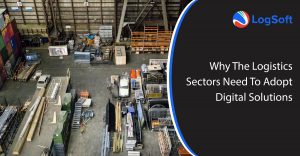Pallets, crates and RTP are types of packaging and are used essentially as the base for the unitization of various transport and logistics management supply chains.
The purpose of pallets and crates is to help stack, store, protect and transport goods in the supply chain during transportation as they are handled through forklifts, jacks or conveyors stored in racks.
How Pallets came into existence?
The emergence of pallets dates back to the 20th century and has continued to evolve over the past century.
Pallets and crates are an integral part of any logistics supply chain. The introduction and innovation of pallets, crates and RTP have come a long way and pallets are significantly considered important for supply chain management as they allow efficiency improvements in the handling and transport of unit loads versus the loose stacking of goods.
Pallet selections
As a business getting into the pallet and crates logistics sector, one of the factors you will need to factor in will be to consider while selecting the type of pallets for use is whether they are reusable or not.
A major benefit of reusable pallets is you have to make a one-time capital investment and can reuse the pallets and crates multiple times over several trips.
Furthermore, over the last few years, more businesses are trying to aim for more sustainable practices. Reusable pallets are great in this respect versus expendable pallets.
Reusable pallets are considered a good investment for the supply chain business as a quality pallet works longer, which returns lower cost per use.
Pallet pooling and management
After world war 2, pallet pooling has become a more popular option in the logistics industry. Pallet pooling essentially allows various industries like the automotive industry, retail industry, any product suppliers etc to rent or hire pallets or crates based on demand.
Renting and hiring not only helps businesses reduce unnecessary capital investment to transport goods but also helps in reducing the harmful effects of expendable pallets on the environment.
Reusable pallets can provide low-cost per-trip, eliminating waste and operational efficiencies throughout supply chains.
Emerging trends in pallet and container management
Upcoming trends and developments for pallet and crate management include the use of various digital technologies and pallet management systems to increase reusability, gain more control of the supply chain and gain more visibility of the movement of pallets, crates and RTP.
Challenges and changes in the pallet industry
One of the major challenges that is faced in the pallet business is the visibility of the supply chain and predictability of the changing demand.
The Covid-19 pandemic has shown clearly how urgent it can be for a business to adapt and adopt new models to combat changing landscapes.
One of the most notable is at retail. Retail stores have been one of the most significant casualties during the lockdown and would have to adapt their logistics supply chain quickly to survive through the pandemic.
The pandemic has also accelerated the shift for ecommerce to adopt digital technologies like pallet management systems to decrease costs while improving the speed and accuracy of deliveries.
Adopting scalable and cost-effective digital technologies like pallet and container management systems has become essential to adapt and shift business models to survive this changing environment.
Surviving the global pallet shortage
Through the pandemic, the pallet business has been hit quite severely by soaring transportation and core material prices – nails, fuel and of course, lumber. Combined with the high demand for products, the supply chain seems to be missing a few links. (Global pallet shortage).
The pallet industry, specifically pallet suppliers and sellers, have faced some major challenges and while you as a business may feel like you are alone – that is not true.
Here are some challenges faced by several businesses in the pallet and crates industry:
- You’ve had to buy or sell pallets that you may not have otherwise;
- Turned away large volumes of business due to lack of supply;
- Had to rely more on recycling scrap lumber in-house to build pallets;
- Had to charge or pay up to twice as much for pallets ;
Reports released indicate that high prices and shortages will be with us through 2022 – with inflation on the horizon.
The real question is finally to understand how the pallet industry adapts to these changes that may not be short term.
How well are you doing these things?
- Efficient use of resources and processes – your staff and their time;
- Reducing and/or eliminate errors that cost time and money;
- Make it simple for customers to work with you;
- Knowing your inventory and real time finance numbers at all times.
Improvement in one or two of these areas is a start and will help. If you aren’t sure where to get started and feel flustered by the software options out there – you can begin with pallet management systems and software.
LogSoft offers various digital solutions for your pallet management. Reach out to us to keep your business competitive.


